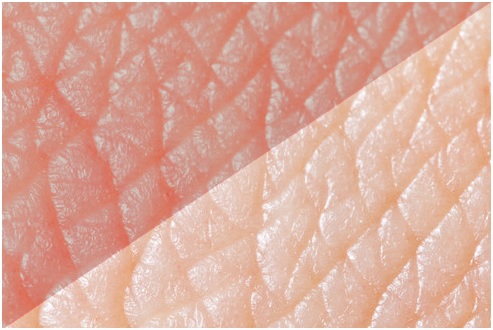
Hyperpigmentation is a particular condition of the skin that causes the darkening of certain areas of skin. It is primarily caused by the overproduction of ‘melanin’ a skin pigment. This condition is quite common in both genders belonging to any of the ethnic group especially in the ethnicities with light complexions. Hyperpigmentation is usually a harmless condition but, in some cases, it may also be a symptom of illness or any disease. Most of the people are concerned about this condition because of its aesthetic implications which disturbs them and cause stress and anxiety.
There are two major reasons due to which hyperpigmentation occur:
- The concentrations of melanocytes, which are responsible for producing melanin within skin, become very high
- Hyperactivation of melanocytes
- Post Inflammatory Hyperpigmentation (PIH): the causes of this type of hyperpigmentation include injury to the skin due to burns, psoriasis, acne lesions, skin friction and sometimes even due to the application of some skincare treatments. Usually, this condition eliminates the activation of the skin regeneration system but can take many months. Hyperpigmentation treatment works quite effectively on PIH.
- UV Exposure/ Generalized Dullness of Skin: This type of hyperpigmentation is caused by normal UVB sun exposure however it’s not much noticeable in the spots form. It appears in the form of general skin dullness on the entire face. The skin tone of the face becomes dull and dark as compared to the other parts of the body. Many women conceal this facial dullness by making use of concealers and facial foundations which helps to brighten up skin tone.
- Lentigines: This condition is also referred to as liver or age spots. With progressive aging, these spots become more visible but aging is not directly responsible for their appearance. These are caused primarily due to excessive exposure to UV rays.
- Melasma: hormonal imbalance is usually responsible for this kind of hyperpigmentation. It is commonly caused due to thyroid dysfunction, hormone replacement therapy, pregnancy-related melasma & hyperpigmentation.
- Tanning Beds/Booths: According to the American Academy of Dermatology and the U.S. Department of Health and Human Services, ultraviolet (UV) radiation from tanning beds, tanning booths, and sun lamps are known carcinogens (cancer-causing substances). Exposure to UV radiation during indoor tanning has been proven to increase the risk of all skin cancers, including melanomas, squamous cell carcinomas, and basal cell carcinomas. In fact, the risk of melanoma increases by 75 percent when indoor tanning devices are used before the age of 30. The UV radiation during indoor tanning also leads to skin aging, hyper- and hypopigmentation, immune suppression and eye damage, such as cataracts. Therefore, the use of tanning beds, tanning booths, and sun lamps is not recommended by dermatologists.
- Heredity
- Skin picking
- Medications like antibiotics, hormones, and anti-seizure medications.
- Skin inflammation
- Cosmeceuticals & Prescription Skin Care
- Broad Spectrum Sunscreen
- Chemical Peels
- Micro needling
Types of Skin Discoloration
Sun Damage
Repeated and prolonged exposure to the sun results in sun damage. Skin damaged by the ultraviolet rays of the sun appears mottled, with uneven pigmentation and redness from dilated blood vessels. Freckles and liver spots, or lentigines, become more numerous. Damage to the deeper connective tissue results in fine lines, wrinkling and loose, sagging skin. Prevention of sun damage begins early in life with sunscreen, limiting sun exposure and avoiding tanning beds. Irregular pigmentation can be reduced with laser surgery or intense pulsed light. Botox and fillers can be used to address wrinkling and sagging skin.
Birth Marks
Birthmarks, port wine stains and freckles and other forms of pigmentation occur naturally. The most common birthmarks fall into two categories – vascular marks and pigmented marks. Vascular marks include port-wine stains, salmon patches, and hemangiomas. These are made of blood vessels that have been damaged or Didn’t form correctly in the womb, causing a red discoloration of the skin. Pigmented marks include freckles, cafe au lait spots, Mongolian spots, moles, and melasma. These marks range from tan to very dark brown and are caused by an overproduction of pigment at birth or during puberty and hormonal shifts.
Uneven Skin Tone
There are several causes of uneven skin. One of the most common is an overproduction of melanin. This hormone is responsible for giving your hair and skin its color and protecting your skin from UV ray damage. Melanin production is one of the body’s ways of protecting the skin, however, this overproduction can cause the skin to appear patchy and uneven.
There are many reasons that your body can begin to produce extra melanin. Too much sun, hormonal changes or scarring are just a few of them. Whatever the causes for your skin’s uneven tone, there are now some amazing ways to reverse and correct it.
